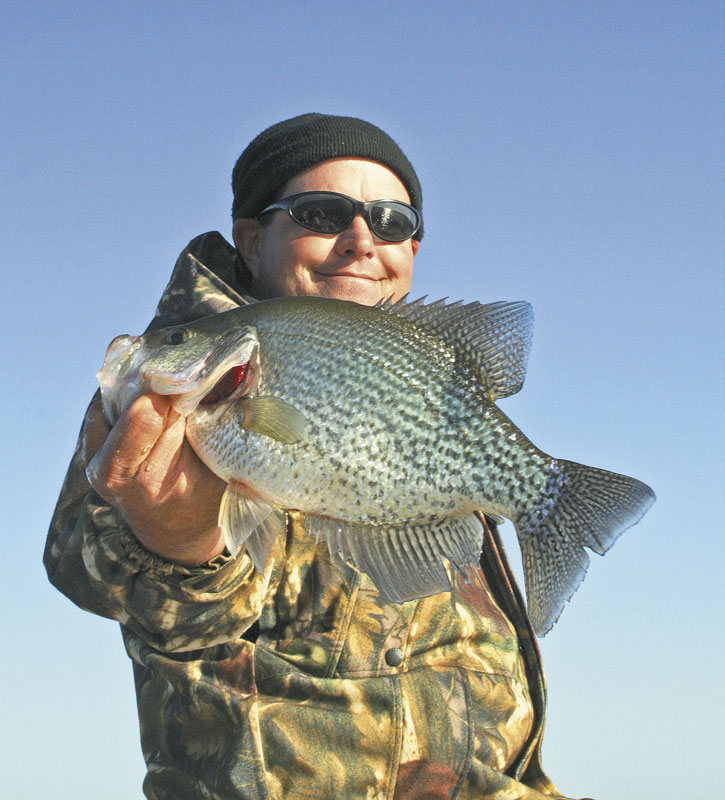
Slabs are biting in these Carolina lakes
December may signal the end of the calendar year but it also heralds the beginning of great cold-weather crappie fishing in the Carolinas. Crappie action can be sensational if anglers employ the right tactics for specific lakes.
Falling water temperatures cause many to overlook crappie, but these fish tend to become predictable in cold weather. The key for slab-slayers is adapting with the right tactics for December conditions.
Several Carolina lakes provide excellent crappie fishing throughout late-November and December.
Jordan Lake
Jordan Lake near Raleigh, NC is a productive year-round producer of quality crappie. And late-season, deep water fishing offers anglers the opportunity to catch slabs in big numbers.
Travis Bradshaw of Willow Springs, NC has been guiding on Jordan Lake for 6 years. He said it’s an excellent time to take limits of slabs.
“The crappie fishing in December is productive and it’s not unusual to catch plenty of fish in the 1- to 11/2-pound class,” he said. “Size and creel limits exist, but keeping a limit of 11- to 13-inch fish is a good possibility. And we’ll catch and cull a lot of fish on a typical day.”
But anglers must have a good game plan and be willing to work out the daily pattern to catch fish consistently, Bradshaw said.
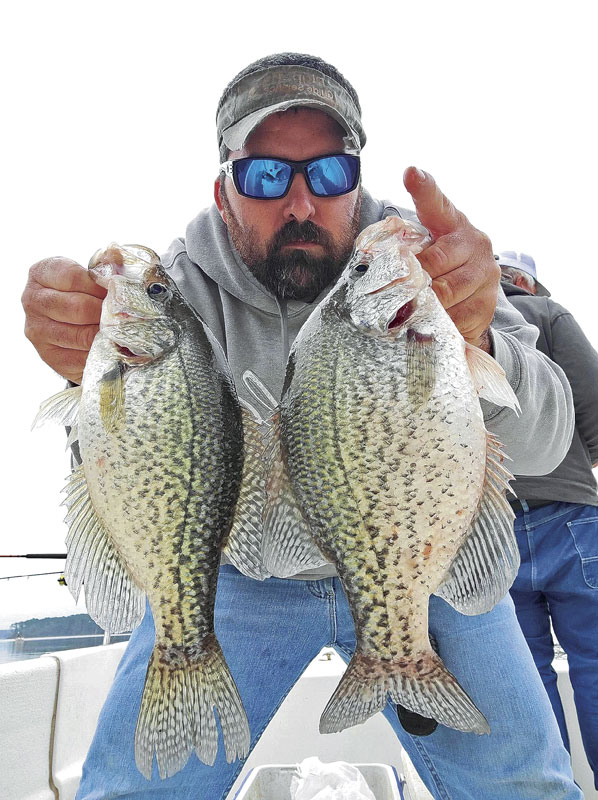
“The overall pattern is consistent for fishing deep water with tightline rigs,” he said. “But the exact fish-catching scenario changes daily so I have to work out the daily fish pattern on every trip.”
Bradshaw (919-669-6989; Pigpen Guide Service) said the basic pattern is to fish water depths ranging from 25 to 45 feet of water with deep ledges and flats as his primary targets.
“But my key as to exactly where to fish changes daily,” he said. “I trust my electronics and I search for schools of shad with crappies mixed in and around them. At that point I can determine whether the fish are near the bottom or suspended.”
Bradshaw said don’t get locked into a single pattern because the crappie may be right off the bottom one day, but suspended at mid-depths the next. That’s where the use of his graph is essential.
“A graph speeds up my fish-finding process exponentially,” he said. “Without a graph, anglers can still catch fish. But it’ll be a more difficult and lengthy process to figure out. Crappie do relate to the bridge pilings in deep water and multiple bridges on Jordan Lake produce good action without relying as much on electronics.”
Bradshaw said his basic tightline rig is a dropshot weight on the bottom and either one or two leaders from 6 to 18 inches above the weight.
“I adapt to what the fish give me and some days I’ll use two-hook rigs. Other days they bite best on single-hook rigs,” he said. “I’ll try them both if necessary to determine the best bite. But crappie can be finicky regarding depth. So fishing two depths can help at times. I use live minnows exclusively, and this time of year I prefer small minnows.”
Lake Wateree
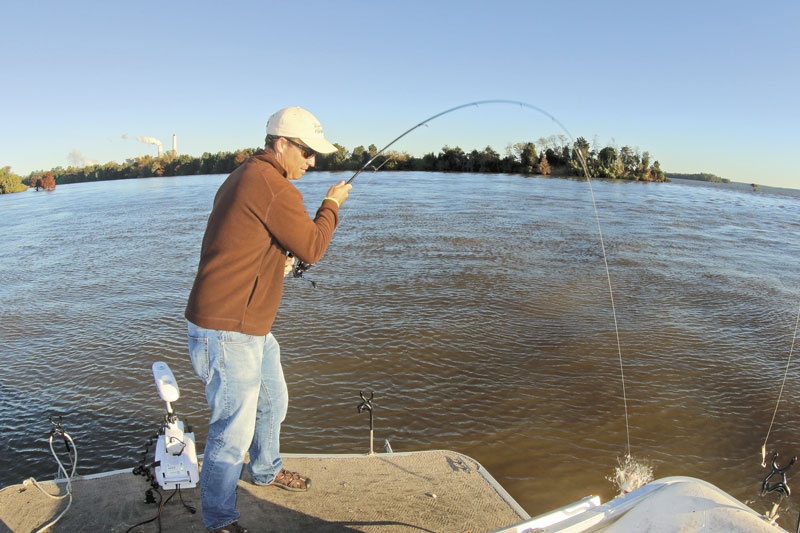 Crappie fishing professional guide and tournament angler TC Lloyd, from Hartsville, SC, said Lake Wateree is one of his favored “go-to” spots for limit stringers of slab December crappie.
Crappie fishing professional guide and tournament angler TC Lloyd, from Hartsville, SC, said Lake Wateree is one of his favored “go-to” spots for limit stringers of slab December crappie.
“For consistent success at Lake Wateree, I fish the upper end of the lake this month,” he said. “I focus on the area from Singleton Creek all the way up past Wateree Creek upstream to the dam. The main river channel area is my prime target. Fish may be on the top of the ledge, down the slope, or in the main deep-water area of the channel.”
Lloyd (843-307-6678) said for the past 3 years he’s employed his “Live Scope” unit to mark crappie when searching the channel ledges and deep holes. He’ll motor along scanning and searching for schools of crappie. With practice he’s learned to identify crappie using this technology.
“It makes the locating process much quicker,” he said. “But fishermen using traditional sonar can mark schools of crappie along the ledges, or deep in the middle of the river, and find plenty of action.”
Lloyd primarily tightlines for crappie and said either live minnows or jigs will produce. But he typically prefers jigs.
“Depth control is essential,” Lloyd said. “The fish are not always deep or near the bottom. They can be found most anywhere in the water column. One trip I may find them near the bottom in 20 to 25 feet of water. But they may be suspended shallow, but holding over deep water the next trip. Trust your sonar and cover water to find the pattern of the day. Lake Wateree can reward anglers with excellent catches of big crappie during December.”
Lake Moultrie
December provides awesome action for slab crappie on Lake Moultrie, and late November and December are excellent for crappie pushing beyond the 2-pound mark.
Longtime angler Kevin Davis fishes out of Blacks Camp (843-753-2231). He said December is ordinarily a deep-water fishing situation. And the size of the crappie is extraordinary.
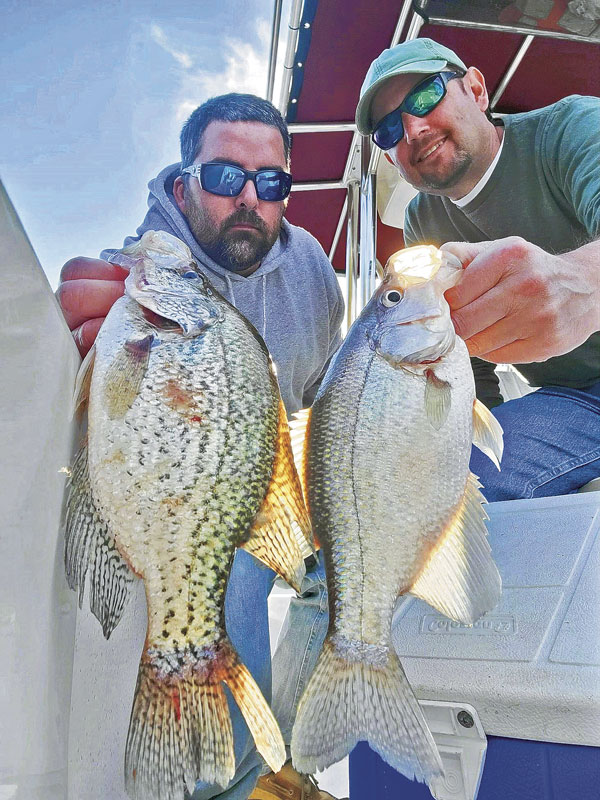
“The bite for slab crappie is excellent,” Davis said. “It’s not uncommon to catch crappie weighing 2 pounds, and occasionally considerably larger. The fish we keep typically average over a pound.”
Davis said fishing is consistent on deep-water brush throughout Lake Moultrie. Prime locations to target include the base of ledges, depressions in natural ditches, ends of underwater points and mouths of underwater creeks.
“Productive depths vary even within the same day because the lake is so huge. But most of my fishing will be in water 20 to 45 feet deep,” he said. “Crappie tend to orient to the top of the brush and along the side. So the depth to fish may vary with each individual brush pile. I use my graph to determine the depth fish are holding and the position of the crappie in relation to the brush. And I target that depth.”
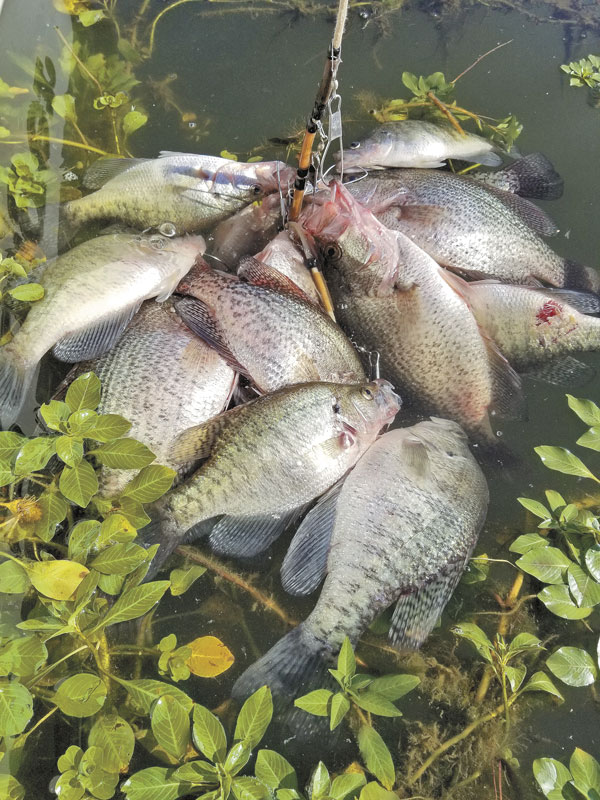
Davis prefers a 1/16-ounce jig in solid color patterns with black, scuppernong and chartreuse all productive. And he’ll use a live minnow trailer in December.
“I place a No. 1 split shot 8 inches above the jig/minnow to enable me to better fish the rig vertically,” he said. “A crappie bite can be subtle. So if the split shot is placed further up the line, we’ll often not see or feel the bite. Little things make a big difference in December.”
Davis said he uses electronics to find the brush and look for forage and fish.
“If I don’t mark bait and fish on the graph, I move on to the next spot,” he said. “Some days we’ll catch limits fishing a couple of places. But often we’ll have to fish several spots.”
Davis said numerous public fish attractors are marked by buoys on Lake Moultrie. These can produce good crappie fishing. Check the SCDNR website for exact coordinates.
Hotspot on the border – Lake Wylie
Chris Nichols from Gastonia, NC, is a professional crappie and catfish guide. He said December is a favorite time to fish Lake Wylie on the North and South Carolina border.
Nichols (704-860-7951) said the winter patterns on Lake Wylie are not difficult to understand.
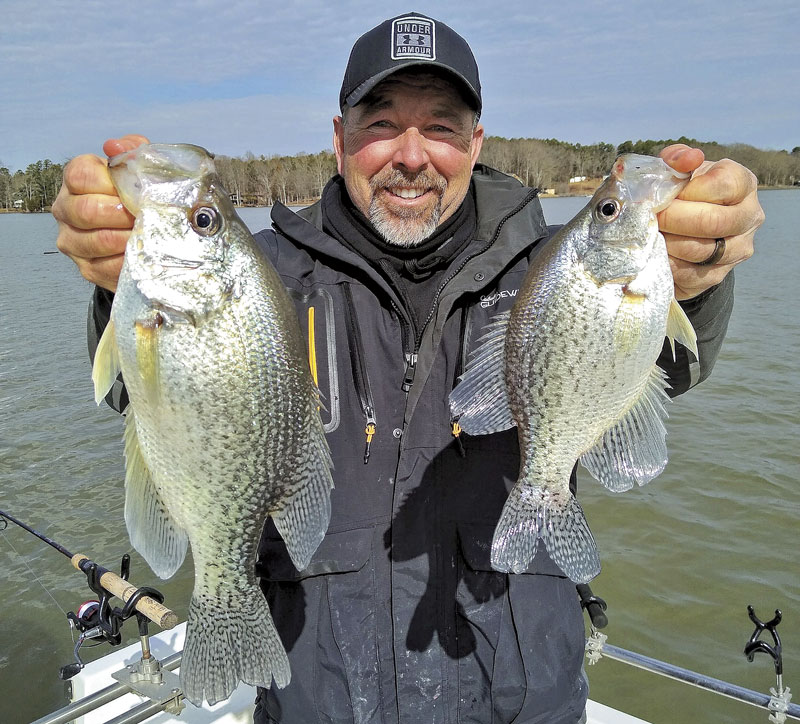
“We’ll catch big crappies during December, once the late fall pattern sets in,” he said. “The key for me is for the water temperature to drop below 60 degrees. Once this occurs the fishing perks up and crappie begin a migration out of the major creeks.”
Nichols said the movement is triggered by the migration of shad from the creeks toward the deeper water of the main lake. Shad are temperature sensitive. So as water temperature plummets, crappies move toward deeper water following forage.
“By late November the crappies are found in 18 to 20 feet of water at Lake Wylie. But during December they gradually migrate deeper to 22 to 25 feet of water,” he said.
Nichols said he uses electronics to identify the potential hotspots and he’ll typically find crappie in close proximity to large pods of shad.
“It’s important to know crappie can be at various depths in the water column on different days,” he said. “I’ll sort this out daily. But once I get the pattern in one creek, I can usually duplicate it that day on other creeks.”
Nichols uses a two-hook tightline rig and he prefers live minnows in December. He uses a 2-ounce bell sinker at the terminal end of the line with a leader and hook about a foot above the sinker, and another leader 2 feet up the line. He said commercial rigs work well but said anglers can easily prepare their own.
“Fishing multiple depths is ideal because this species is depth sensitive,” he said. “I fish right at the depth I’ve marked them or slightly shallower. Depth control is crucial.”

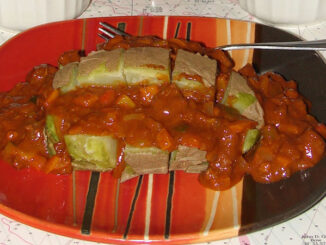
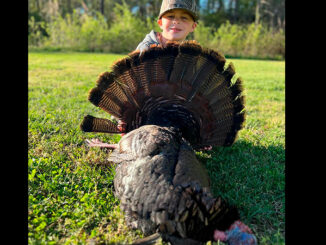
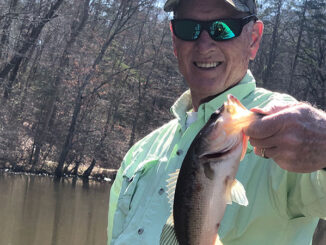

Be the first to comment